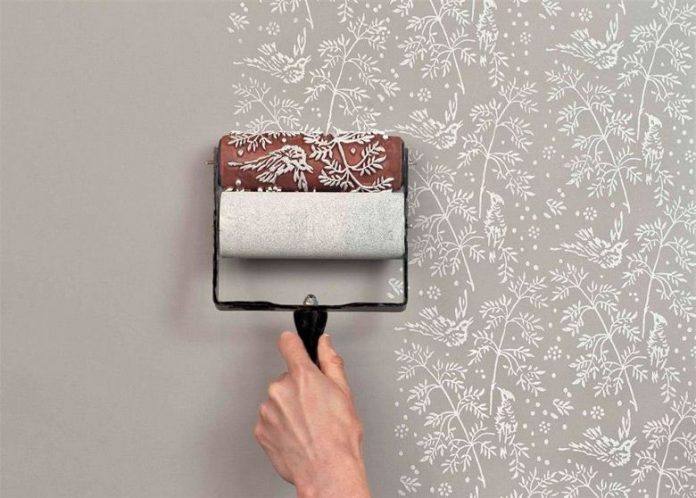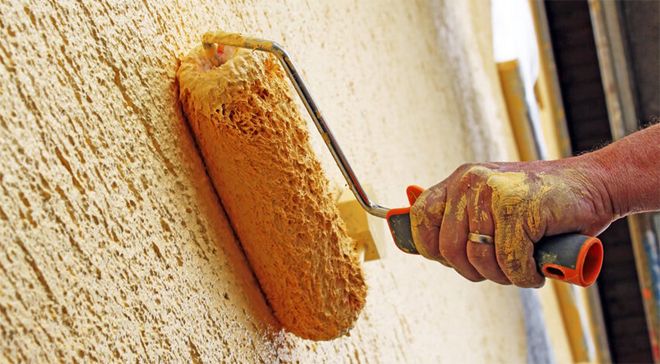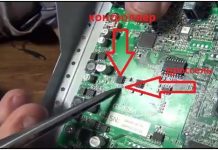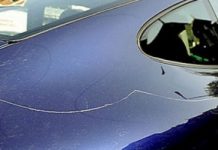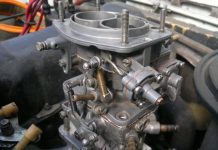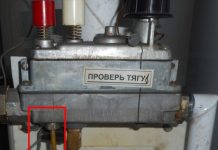VIDEO
The purpose of our article today will be to solve the question of how to level the wall with your own hands. In fact, this can be done in several ways, for example: using drywall sheets, mounting (PVC) plastic panels and, of course, "good" plaster. The most common and cheapest way is still to plaster the surface of the walls. And that is why in this article we will describe the features of this particular process: varieties, methods and subtleties of applying plaster.
First of all, you need to find out what the walls are plastered with. A few years ago, a cement-sand mortar was used for plastering walls, but today, the blessing of evolution, a lot of various plaster mixtures have appeared: on a cement basis, sand and various additives or gypsum.
The advantage of modern plaster mixes is obvious: in addition to sand and cement, they contain various additives that give the mixture new possibilities, this is an increased mechanical strength, this is an increased resistance to temperature and moisture on the surface of plastered walls, and much more. ...
Depending on the state of the surface, that is, on the required layer of plaster, mixtures with different sizes of sand fractions are used. Because of what plaster mixes are divided into: starting and finishing. For plastering walls, for example, in a new building, you first need to use a starting plaster mixture, and then, when the first stop, a layer of finishing plaster is applied. Thus, the surface comes out not only even, but also more resistant to external influences. For plastering the walls in the apartment, you can use a modern plaster mix for plastering surfaces of medium complexity. Thanks to this, the surface is smoother, and the lead time is much shorter than when plastering the walls with cement-sand plaster.
However, each of these materials has its drawbacks:
As for the cement-sand plaster, it is not suitable for application on a smooth surface (very quickly it will begin to flake off and fall off in large layers);
Gypsum plaster is relatively expensive, but not suitable for rooms with high humidity and has low strength.
We will not consider the process of plastering walls with an ordinary cement-sand mortar, since there are more modern and durable building materials.
To begin with, pour water into the container and fill it with a dry gypsum mixture, and only in this order, otherwise lumps will form, which is very bad and problematic to plaster the walls. We will not talk about the proportions, since each type of mixture has its own indicated on the packaging by the manufacturer. It is best to stir such a mixture with a special mixer or a very powerful drill, since there is a very strong load on the instrument. It is necessary to strictly observe all proportions, since a violation of the proportions of one or another component will violate the strength and performance characteristics of the material. Ultimately, the solution should be in the form of a homogeneous mass, without any formations and lumps.The peculiarity of the preparation of gypsum plaster mixes is that they must be mixed twice with an interval of 2-5 minutes.
What tools are needed when plastering walls:
2. Rule (the length of the rule depends on your capabilities, since it is very difficult to "pull" it, but at the same time, the larger the rule, the smoother the surface is);
4. Grater (for surface grinding);
5.Construction level (the presence of a plumb line will not be superfluous);
Features of plaster on different surfaces:
1. Plaster brick walls
2. Plastering concrete walls
3. Plastering of foam concrete walls
4. Plastering of walls from tongue-and-groove plates
This method is quite simple and the principle of its implementation consists in manually applying a cement-sand mortar to the wall surface with a trowel or spatula (this is more convenient for someone). To do this, take a grater in one hand, put a certain amount of mortar on it, and also throw it on the wall with a trowel or spatula. At the same time, when throwing the solution onto the wall, it is necessary with a characteristic slap - thus, the solution adheres better to the wall surface. By the way, it is better to moisten the surface of the wall with water before applying the plaster. After a certain section of the wall is filled with mortar, take a float and level the surface in a circular motion, if necessary, add the mortar with a trowel. If you plan to apply a thick layer of plaster more than 5 centimeters, the process must be divided into several stages. First, you need to install a reinforcing mesh, then apply one layer of plaster, and only after the first layer has dried, and after about 7 - 8 hours, you can apply the next layer, and so on. Do not try to speed up the process and do everything at once - the layer of plaster will fall off and you will have to redo everything from the beginning.
As we said above, gypsum plaster dries very quickly, therefore, with this method of leveling the walls, you will save a lot of time, about three times less than with cement-sand leveling the walls. The process of plastering walls with a gypsum mixture is as follows: the gypsum mortar is applied to the wall with a small spatula, after which it is leveled with a larger spatula along the plane of the wall. As well as when plastering walls, with a cement composition with a large layer thickness, it is necessary to take breaks of 1.5-2 hours between the application of the next layers.
The previous method of plastering walls is certainly quick, but the result without certain skills is far from excellent. Therefore, it is best to do the plastering of the walls with your own hands - along the lighthouses. The process of preparing the surface of the walls for plastering in this way will take longer, but the result will be incomparably better. A special metal guide profile is used as beacons; it differs slightly from those profiles that are used when installing a false ceiling with your own hands.
First of all, you will need to determine the geometry of your walls, this is necessary in order to form a flat surface.Using the building level, you need to determine the state of the wall surface along the vertical axis. By the way, if the level is small, this can be compensated for by the rule. Then we lay down the first lighthouse. To do this, you can use both dowel-nails and plaster mortar. Take a solution and make bumps every 25-30 centimeters, after which you put a beacon on them and use a level to control the curvature, and after the solution solidifies, the beacon will be reliably fixed. At the same time, control the thickness of the future plaster layer. The verticality of the beacons can also be checked using a plumb line.
Thus, at first, two lighthouses are laid in opposite sides of the wall with an indent from the attached walls by 20-25 centimeters. After that, between the beacons, pull the lace (above and below the wall) and, if necessary, install intermediate beacons, and the distance between the beacons should be slightly less than the length of the rule. It is better to fasten the lace with self-tapping screws set according to the level, otherwise, when pulling the laces, the beacons can be displaced, which cannot be done. After installing all the beacons, at least 12 hours must pass for the fixing solution to solidify properly.
The described method can attract certain difficulties for beginners in this business:
1. It is necessary to properly prepare the fixing solution (it should be slightly thicker than usual);
2. So that the beacons do not fall off due to the fact that the solution does not stick to the wall, it is necessary to moisten the wall with water;
3. Experience is needed to correctly place the beacons;
4. It takes time for the fixing solution to freeze, otherwise buy special plastic fasteners for fixing beacons
If you plan to use these fasteners, then the process of plastering the walls along the beacons will be as follows: in the places where the beacons are installed, drill holes for the dowels. Next, install the mounts for the profile of the lighthouse and use the level and plumb line to control the verticality of the lighthouse, screwing in and out the screws if necessary. Similar to the previous method, fix two beacons along the edges of the wall, pull on the lace and install all the necessary intermediate beacons. This method will allow you to more accurately set beacons and significantly save time for work.
With all the preparatory work completed, which means that you can start applying the plaster mixture. The plaster mixture is thrown (it is thrown, so it adheres better to the wall surface) on the wall between the lighthouses, after which its excess is removed using the rule. The rule must be carried out from the bottom up, and in order for the solution to lay down more evenly, the rule must be periodically moved from side to side. With a large thickness of the plaster layer, the process must be divided into two stages: first, put on a layer of plaster and leave it in this position (with bumps) until it dries, then apply a second layer and level it as a rule.
It is relatively easy to do plastering of walls on lighthouses with your own hands, and on the other hand, it is quite profitable, because construction crews will take good money for this type of work.
As usual, we advise you to watch the video titled:
VIDEO
Plaster is not eternal. The owners of houses and apartments face a problem when it begins to crack or fall off in places. What to do? We will consider the reasons for this phenomenon, as well as how to repair the plaster of walls in separate places and the technology of surface restoration.
Defects on the surface, causes and method of restoration
Surface lumps and swelling.
Sedimentary cracks.
Fresh plaster is peeling off the wall.
Cracking along the entire depth of the solution.
Efflorescences, spots and stripes appear on the wall after the plaster layer has dried.
What is the cause of these defects? Swelling and bumps can appear if the limestone composition is unstable and has unqualified particles. How to repair lime plaster in this case? It is necessary to cure the plaster until the lime is completely extinguished. Defects are opened, abundantly moistened with water and filled with plaster mortar. It remains to wipe the surface.
Sedimentary cracks are formed with poor mixing of the composition and with an excess of binder. The exact proportions and dosage in accordance with the packaging will help to solve the problem. It remains to thoroughly mix the plaster and level the surface.
When the substrate has not been prepared, cleaned, rough, too dry and dusty, fresh plaster can flake off when sprinkled. To solve it, you will need to suspend work and start preparing the surface. The application technology is as follows: notches are made on the surface for better adhesion (or shingles are made), the wall is cleaned of dust and dirt. In addition, it is moistened with water. Then the mixture will not flake off, and the repair of plaster and surfaces inside the building will not be needed for a long time.
VIDEO
If the problem lies in cracks along the entire thickness of the plaster layer, then there is exactly one reason - there is no reinforcing mesh between the wall and the plaster. The base material is not rigid and is not reinforced in any way. The technology for applying the mixture is that the subsequent finishing layer should be less durable than the previous one, that is, there is less binder in its composition. So that the intermediate layers do not dry out, they need to be moistened with water and reinforced with a mesh.
The last defect is spots and stripes. They most often appear on the outside of the walls. This could be due to a very damp or wet surface. Especially when the plaster is applied after rain. The solution is to process the dried walls, make waterproofing, so that moisture does not pull up from the ground. Local repair of plastered walls is done differently. The technology is simple, but requires careful consideration.
Do-it-yourself repairs to a wall with pieces of plaster that have fallen out. The work is not difficult. You just need to follow the instructions. Alternatively, you can completely remove the layer and apply a new one. But it is more profitable to plaster the damaged areas. It all starts with an inspection. It is important to identify areas that need repairs. A wooden mallet is required. We'll have to lightly tap the wall. If a dull sound is heard, then the composition has departed.
Then the sequence is as follows:
After the examination, the old plaster must be removed. We do not touch the places where it holds well.
Next, the seams are cleaned if it is brickwork. The surface is cleaned of debris and dust.
A primer is applied to the wall. It is needed for better grip.
After the surface has dried, the wall is slightly moistened and the solution is applied. If most of the wall has peeled off, then you will have to use beacons and a rule. Only in this way the wall surface will be perfectly flat.
For minor damage, plaster is removed in the form of a square or rectangle. The site is processed according to the method described earlier, and the cavity is filled with the prepared composition. It is important to stick to the proportions so that the mixture has the correct consistency.
Another restoration option is restoration with corks. In the right places, a hole is drilled to the base, primed, filled with mortar and plastered.
Note! For wooden walls, use a limestone mortar. However, it is not suitable for wet surfaces. Better to resort to a cement mixture. The corners are recommended to be treated with gypsum plaster, as it sets faster.
Repairing plaster also involves removing stains from the surface of the wall.They appear during operation and can be from grease, soot or rust. It also happens that the spots were formed before finishing work. In this case, you will have to solve this problem before you start gluing wallpaper or laying tiles. The restoration work is as follows:
As for rust stains, copper sulfate or a 2% hydrochloric acid solution will help to cope with it.
If the stains have strongly eaten into the plaster and cannot be cleaned, then you will need to seal the area with dye or whitewash.
Advice! Whatever surface you clean, it is important to first clean it of dirt and dust. Only after that other manipulations are performed.
The restoration of the surface under the tiles requires special attention. The procedure is as follows:
using a rubber mallet, the surface of the wall is tapped. This is the only way to determine a peeled or poorly fixed area;
when the site is found, you need to knock harder so that the tile falls off. If it is not removed in this way, then you will have to act radically - to break it. The process requires accuracy: the tile is broken from the center so that the adjacent one is not damaged;
if after removal a solid layer of plaster remains, then it is not necessary to knock it down. The new tiles should be glued more reliably using special glue;
when the plaster falls off, the place is cleaned, primed and plastered again. After drying, a new tile is glued.
Removing surface cracks is much easier. Repair of wall plaster in this case consists of two stages: surface preparation and plastering. To begin with, the cracked wall is cleaned of old cladding material and dirt. After that, a primer is applied to the surface. When it is dry, you can start stripping to give the wall a smooth finish.
Then the plaster is mixed and applied to the surface with a thin layer. The composition is leveled with a spatula. In the presence of large cracks, it is better to reinforce the structure with a reinforcing mesh. With it, the plaster layer will be much stronger and will not crack.
Peeling plaster is a small problem that can be solved by hand. No need to redo all the work. It is worth carrying out restoration work, which will take a maximum of one day, plaster mix, a primer and a trowel with a rule. Even with cosmetic repairs, it is recommended to remove the old solution so that it does not fall off along with the finish during operation. Stains and cracks also need to be repaired. Then you can be sure that the finish will last for many more years.
Sooner or later, the topic of renovation comes up in every home. The final appearance of the premises will also depend on the quality of the preparatory work carried out. Having applied once strength to a high-quality finish, in the future it will only be possible to periodically re-glue the wallpaper or change the color of the walls. Initially, it may seem that the work of a non-professional master cannot be done. But you can try to make at least rough sketches. In addition to moral satisfaction, this will also significantly save your personal budget. This review describes in detail the entire technological process of how to plaster walls with your own hands for a beginner. Videos and step-by-step instructions will help you understand the construction nuances.
The main purpose of the plaster is to level the geometry of wall and ceiling bases in order to eliminate irregularities or defects. It serves for rough finishing. The technology of application allows the mixture to be applied in a thick layer in case of large deviations. With the help of plastering the walls in the apartment, you can get the most even foundations.
According to its composition, plaster is of the following types:
The most important difference between them is the drying time of the solution.For a gypsum mortar, it takes up to a week for complete drying, for a cement mortar it will take about a month. Therefore, formulations with cement should be used when it is necessary to achieve maximum durability.
Such coverage will last for several decades. Modern manufacturers introduce polymer additives into the mortar mixture, which accelerate drying up to two days. The cement mixture is used for leveling surfaces in basements or for laying tiles.
The process of leveling the walls with plaster with your own hands is quite laborious, therefore, gypsum solutions are often used. With gypsum compounds, it is important to observe moisture conditions. You can apply gypsum plaster in one layer, which significantly saves your budget. The decoration is carried out both on a brick base and on wooden surfaces. For perfect smoothness, the coating should be putty after drying of the plaster.
It is important! In conditions of high humidity or temperature extremes, gypsum plaster should be abandoned in favor of cement.
For beginners, cement plaster with polymer additives is better suited for walls. Video tutorials will help you understand and painstakingly complete the entire process in compliance with the technological sequence.
A person who is far from construction terms will at first glance decide that these are synonyms for one type of construction work. In fact, these concepts have both similarities and significant differences. Both materials are designed to level surfaces, and this is where the similarity ends.
Related article:
Manufacturers offer a dry composition or a ready-made plastic solution. Cement, gypsum and polymers are added as binder. With the help of a putty, you can level out small surface defects, smooth the base after plastering. For cracks up to 10 millimeters in size, use the starting composition. The finishing putty is used for the final leveling of surfaces.
It is impossible to mix starting and finishing putty. Compositions of different homogeneity can form additional defects on the bases.
With plaster, surfaces with deviations of up to 15 centimeters can be leveled. In addition, it acts as a thermal insulation for surfaces, in some cases additional moisture protection.
Plaster can be ordinary and decorative. The composition contains large grains. It is used as a roughing or structural topcoat.
When applying putty and plaster, different technologies are used. For plaster, this happens as follows:
the first layer is applied by the spraying method, with the help of which large surface defects are hidden. In addition, it serves as an additional adhesion with subsequent layers;
the execution of the middle layer ensures the leveling of surfaces;
finishing putty or cover - finally smoothes the base.
Decorative mixtures are applied according to individual technology. The plaster composition needs several days to dry completely, the putty is ready the next day.
Before carrying out repair work, it is necessary to study the features of the base of wall surfaces. The method of performing the work will depend on this. For even walls, a spatula and a level are enough. Bases with large defects and deviations can only be leveled using beacons. You may need a lot of the mixture. In this case, additional reinforcement should be made on the wall.
There are several rules for plastering walls:
first of all, the wall surfaces are cleaned and primed;
in the second stage, the bulk of the plaster is applied and distributed;
at the final stage, the base is covered and cleaned.
A video on how to properly plaster walls will help you to do all the work correctly:
plaster;
primer for pretreatment of wall bases;
beacons in case of large surface deviations;
a rule for aluminum plaster with a length of 2 m for pulling the composition and 2.5 m for installing beacons;
bubble level at least 2 meters long;
spatula 15 cm wide;
construction float;
trowel;
bucket;
a roller with a bath or a brush for a primer;
gloves;
perforator with a nozzle for mixing the mixture;
dowels, screws, Phillips screwdriver, metal scissors for cutting beacons;
hammer;
metal ironing;
roulette;
plumb line.
Some tools are already available in every home. You will have to buy or rent something. But this is not a tool for one repair, everything will come in handy in subsequent repairs. We can say - an investment in the future. Now we know what tools are needed to plaster the walls, we can start repairing.
To prepare cement plaster, mix the cement with sand in a 1: 3 ratio. Water is gradually poured into the composition with constant stirring. You should get a solution according to the consistency of sour cream of high fat content. Before mixing, you should read the instructions and recommendations of the manufacturer. If repair work is carried out in a room with high humidity, experts advise adding lime. It will take away excess moisture and make the microclimate more comfortable.
For surfaces made of concrete and aerated concrete blocks, it is recommended to use gypsum-lime plaster. Its plasticity is well adhered to the base. To prepare such a solution, gypsum is poured into a bucket of water in a thin stream, then everything should be quickly mixed by adding milk of lime. This mixture is applied quite easily, and will help beginners get their hands on finishing work.
For plastering walls with your own hands, you can buy a ready-made mixture, which is offered in a wide variety in construction hypermarkets and stores. This is the easiest preparatory work.
The workflow for preparing a surface for plastering begins with cleaning the substrates from previous coatings. After that, the level should determine the magnitude of the deviations in order to determine whether the installation of beacons is necessary or if you can do without additional work.
Then prime all substrates thoroughly with a brush or roller. It is necessary to choose a deep penetration primer, there is no need to save on the composition at this stage, this will help the putty to adhere well to the surfaces. In addition, it protects the walls from excess moisture and prevents mold and mildew damage, which can corrode the material.
Video (click to play).
Before applying plaster to the walls with your own hands without beacons, after the primer has dried, moisten all bases well with water.

